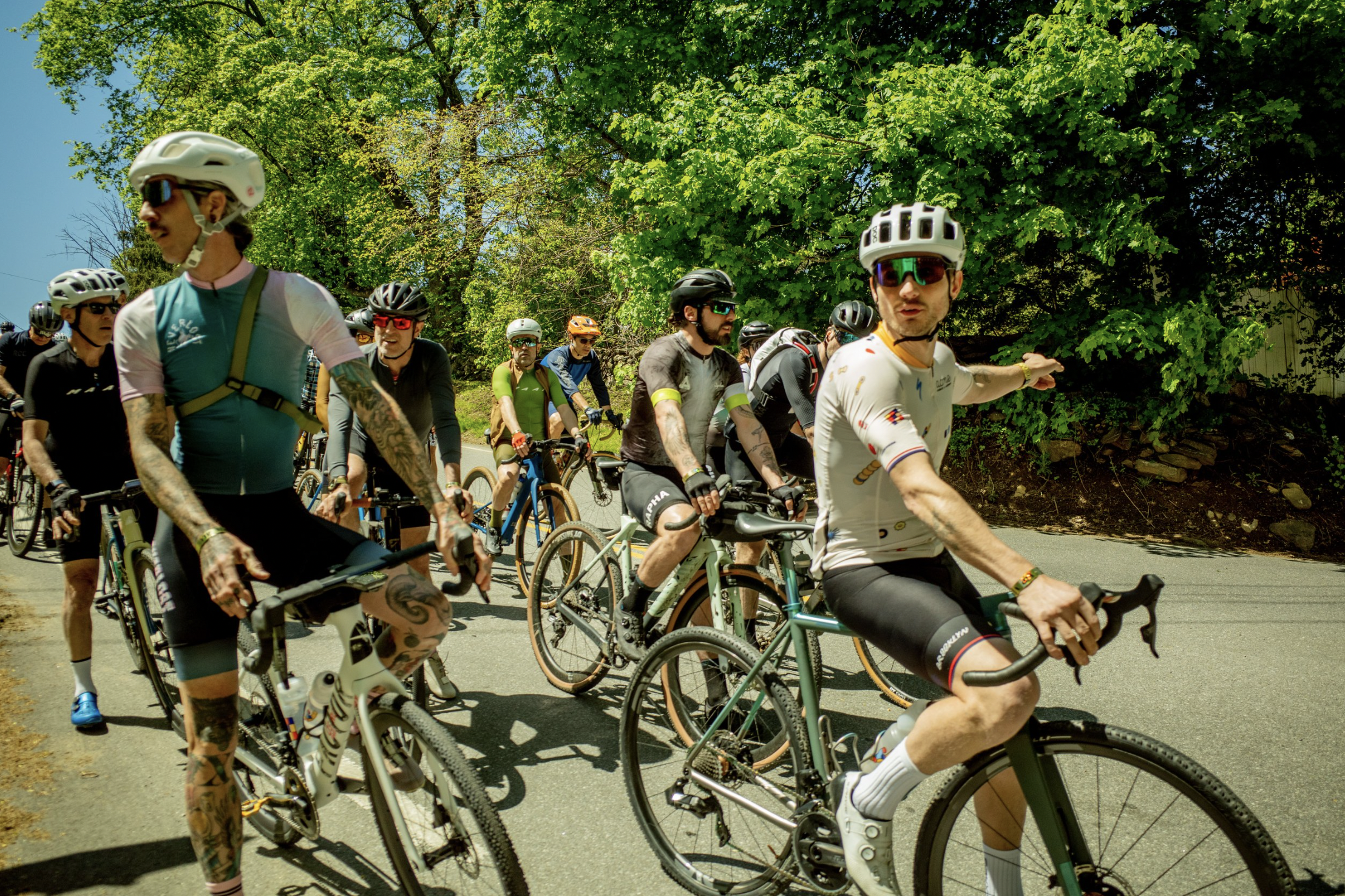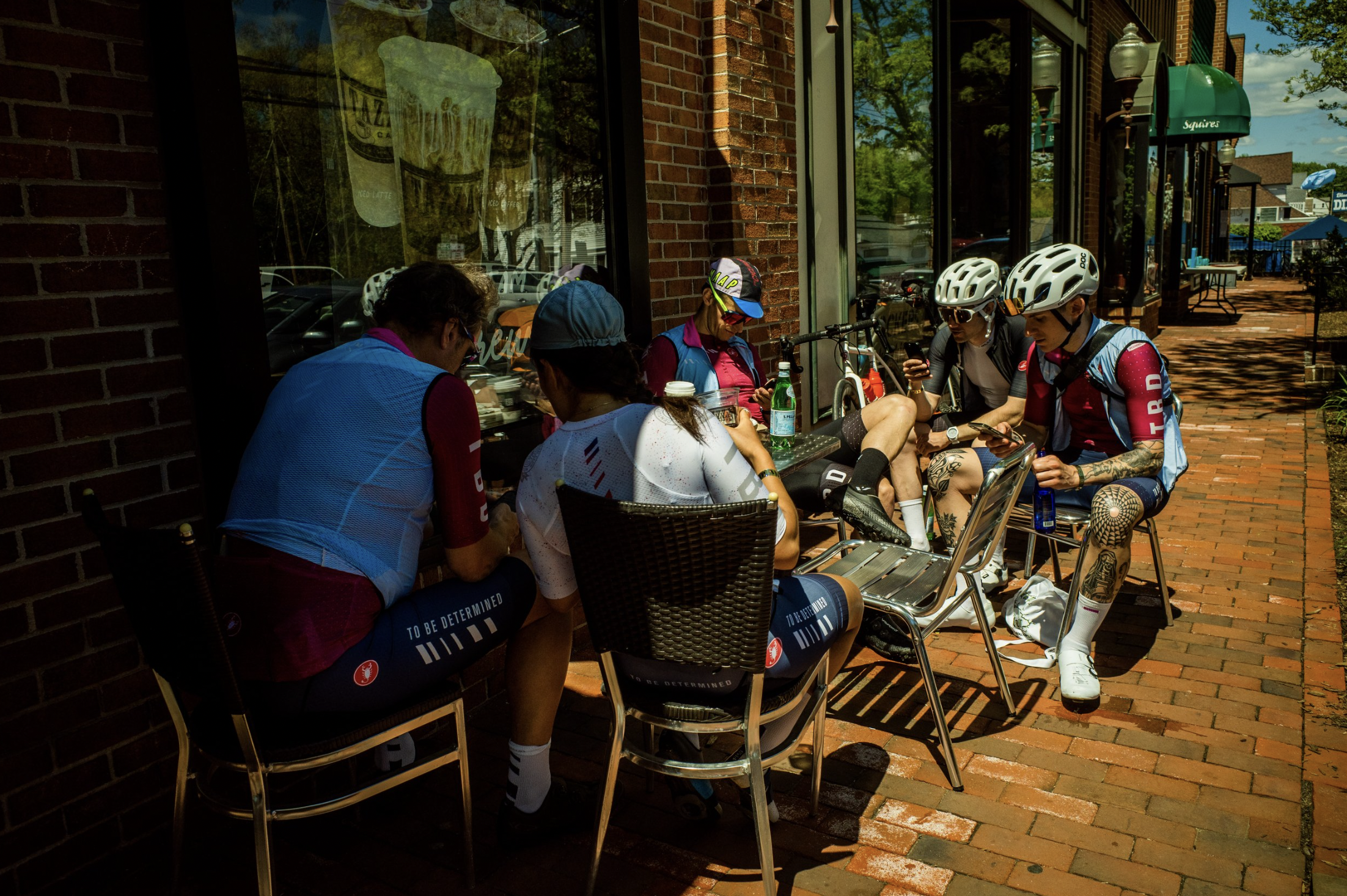How To Join Your First Group Ride
So, you want to go on your first group ride, but aren’t sure what to expect, how to prepare, or even where to find one that suits you? Well, we’ve put together some FAQ’s that you might find helpful. We’ve been on group rides of all types, from family friendly advocacy focused slow rolls, to storied race simulating affairs such as the Gimbels Ride, to leading NYCC SIG programs. No matter the type of group ride, there are some things you’ll want to think about and prep to set yourself up for having a fun and safe time out on the road.
What type of Group Ride should I choose?
Most ride leaders will provide some kind of description as to what kind of ride you’ll expect, such as the distance, pace, and how self sufficient participants must be. Some will be social rides with marshals (who keep the group together and help with mechanicals), and some will require total self-sufficiency. Often a ride will be described as having either a “no drop policy” (the group will wait for all riders at specified meeting points) or being a “drop ride” (the group will keep going even if folks cannot keep up), and some will have some kind of hybrid policy (the group stays together until X climb, then it’s everyone for themselves, and we regroup at the top). Some rides require pacelining skills, and some are meant for folks just starting out learning how to ride in a group. Some rides are focused on stopping at points of interest for food or drinks, and some are meant to cater to a particular subset of the community to provide a safe and welcoming space for them.
This is all to say, look for the type of group ride that best aligns with your interests and ability, and don’t be afraid to reach out to the ride leader to ask follow-up questions or for further details. Also, don’t be afraid to try a ride that may push you a bit out of your comfort zone. If you prepare yourself with bailout plan, and are open-minded about the possibility of getting dropped, you can broaden your circles in the cycling community. If you show up for a ride and those folks don’t pass the vibe check for you, keep looking for a group that does, or even consider building your own community.
How will I know if I can keep up?
This is a very common question folks ask. When I first started group rides, I did a 4 lap assessment in Central Park as recommended by the New York Cycle Club. Time yourself riding 4 laps of Central Park (about 24 miles of undulating terrain) at a sustainable pace and the average speed will be your target “cruising speed” for a typical NYCC group ride. Many club and group rides use similar speed indicators for their rides, so it’s a good way to establish a baseline for what pace you’re comfortable riding.
Where do I find Group Rides in NYC?
One of the best things about riding in NYC is the diverse cycling community. There are so many different groups to choose from, whether you’re into cruising around neighborhoods sightseeing or doing food tours, bikepacking, centuries, or race laps around an abandoned airfield in Brooklyn. Most cycling groups are on social media, so instagram or facebook is a good place to search. Signing up for a Strava is another way to find clubs. If you’re into racing or organized events, bikereg is a good site to search for events. And, there’s just good ole Google. That’s how I ended up finding the New York Cycle Club when I was starting out. Here’s just a small sampling of local ride groups/clubs:
and check your local bike shop or bike friendly coffee shops for ride events to plug into!
What kind of bike & equipment do I need?
Most group rides on the road do not require any particular type of bike, as long as it’s in good working order and you can maintain the published pace. The one exception is that group rides where pacelining is involved often requires bikes with front and rear brakes (i.e., no fixed gear bikes) and do not allow aerobars for safety reasons. Some rides may specify that there will be portions of the route on gravel or singletrack, in which case, you may be more comfortable riding a bike with wider or knobby tires. You’ll also typically want to have a saddlebag to hold your flat fix kit and a multitool, some co2 cartridges or a hand pump, and bottle cages to hold hydration. Most group rides also require helmets and lights if you end up riding after dark. That’s typically the bare minimum you’ll need to stay self-sufficient on a ride.
What if I don’t know how to change a flat?
I highly recommend anyone who rides outside to learn how to change a flat tire themselves, and practice a couple of times! There are many videos on youtube or free clinics at local bike shops you can attend. If you’re lucky, someone on your ride may be able to help you, but it’s always best to be able to get yourself out of a jam. An uber ride can get quite expensive and not all drivers want a greasy bike in their car!
Do I need to bring food & water?
I always like to be prepared with at least one bottle of hydration (or more depending on how long I intend on riding or how hot it is) and a bar or gel or a some other easily digestible food, like gummy bears. It’s easy to underestimate how much energy your body is expending on a ride, especially if you’re in a group and concentrating on keeping up or being social. You want to make sure you’re getting hydrated and fueling so you don’t bonk!
What happens if I GET DROPPED?
Make sure you have a phone on you, be familiar with the route in advance, and print out a cue sheet or have the route map loaded on your bike computer or smart phone. It’s also always good to be familiar with the nearest transit bail out options.
Can I Just HOP ON THE BACK OF ANY GROUP I SEE?
Unless they are your friends, teammates, or someone from the group has explicitly welcomed you to join that day, please do not simply sit on the back of a group of folks uninvited. And definitely never sit on an individual’s wheel whom you don’t know or who hasn’t asked you to ride with them.
In conclusion, the most important things to know before your first group ride are:
Know what kind of ride you’re signing up for
Choose a ride that aligns with your interests & ability
Communicate with the ride leader
Try to be as self sufficient as possible
Plan for bailout options
Have fun!
All photos in this gallery by Matthew Vandivort unless otherwise noted.




